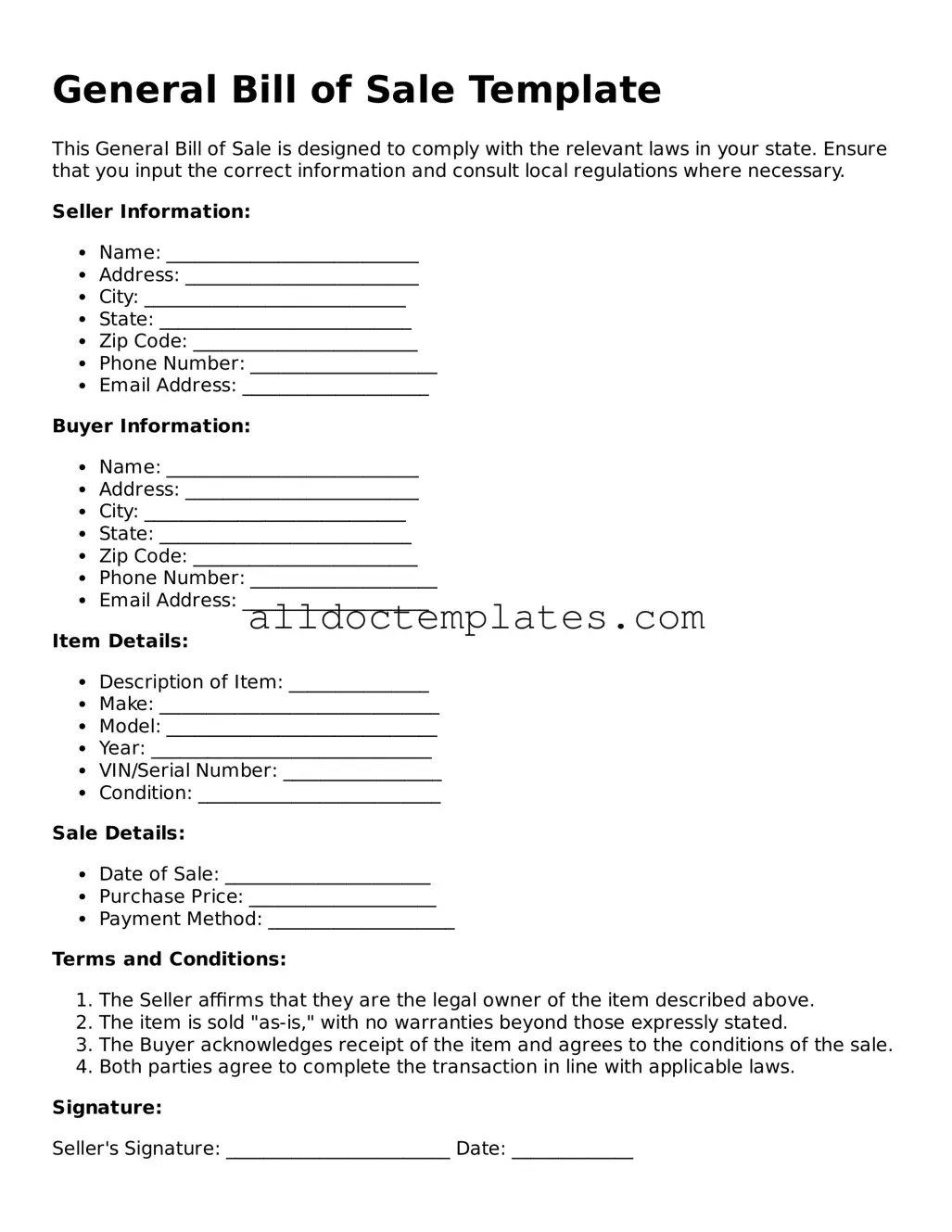General Bill of Sale Template
This General Bill of Sale is designed to comply with the relevant laws in your state. Ensure that you input the correct information and consult local regulations where necessary.
Seller Information:
- Name: ___________________________
- Address: _________________________
- City: ____________________________
- State: ___________________________
- Zip Code: ________________________
- Phone Number: ____________________
- Email Address: ____________________
Buyer Information:
- Name: ___________________________
- Address: _________________________
- City: ____________________________
- State: ___________________________
- Zip Code: ________________________
- Phone Number: ____________________
- Email Address: ____________________
Item Details:
- Description of Item: _______________
- Make: ______________________________
- Model: _____________________________
- Year: ______________________________
- VIN/Serial Number: _________________
- Condition: __________________________
Sale Details:
- Date of Sale: ______________________
- Purchase Price: ____________________
- Payment Method: ____________________
Terms and Conditions:
- The Seller affirms that they are the legal owner of the item described above.
- The item is sold "as-is," with no warranties beyond those expressly stated.
- The Buyer acknowledges receipt of the item and agrees to the conditions of the sale.
- Both parties agree to complete the transaction in line with applicable laws.
Signature:
Seller's Signature: ________________________ Date: _____________
Buyer's Signature: ________________________ Date: _____________
This General Bill of Sale is intended for use in the United States and may need to be modified for compliance with specific state regulations.
